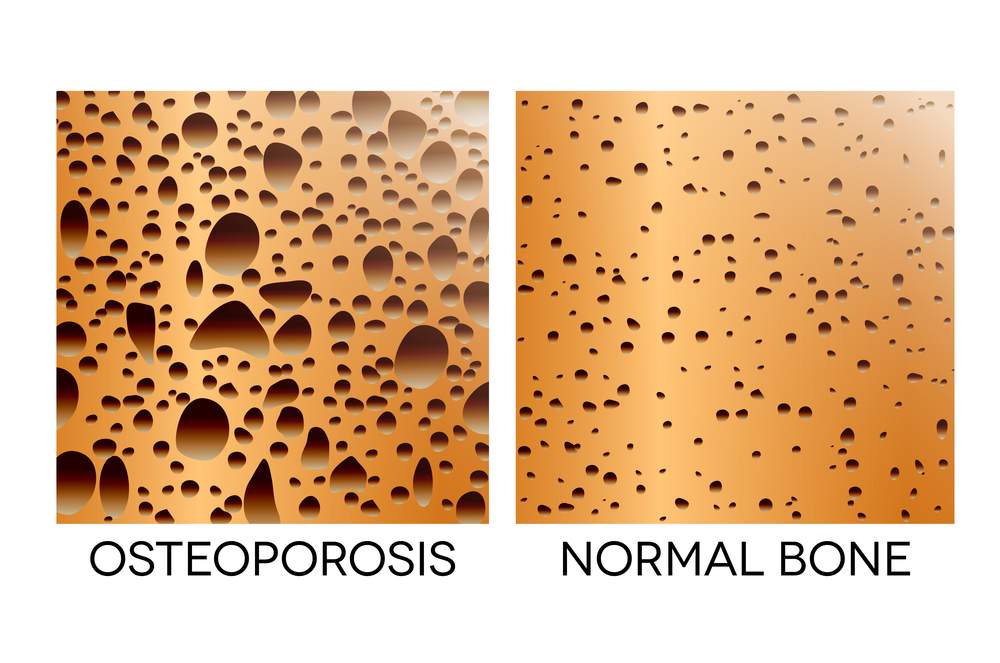Hand pain can have many causes because the hand is made up of many different parts. The bones, ligaments, tendons, nerves, skin, and other structures that help the hands do a wide range of tasks can also be sources of pain.
This article will go over the causes of hand pain. You’ll also learn about how you can treat hand pain at home and when you should see a provider about hand pain.
10 Reasons Behind Hand Pain
Hand pain can be concerning. We use our hands to do so much that the prospect of having to live without their use can be more than daunting.
There are many possible causes of hand pain, but fortunately, many of them have very effective treatments. There’s a good chance you’ll be able to eliminate your hand pain for good, or if not, manage the symptoms.
1. Arthritis
Arthritis is one of the most common causes of hand pain. Medically speaking, arthritis is when your joints become inflamed. As there are many joints, there are many types of arthritis. Arthritis tends to occur more and more commonly as we age, though it can still occur at younger ages.
It more commonly occurs among women than men, as well as among overweight people. If your hand pain seems to be focused in your joints, and if you have swelling or stiffness as well, you may have arthritis. Another sign that you have arthritis is if your hand pain occurs more in the morning than during the rest of the day.
Your joints are slow to repair, so they eventually wear down simply by being used. After decades of use, this can cause arthritis. Alternatively, something other than normal use might weaken the cartilage in your joints, like an infection or an injury, which can make arthritis worse as well as make it more likely to afflict someone younger.
2. Peripheral Neuropathy
Your body’s nervous system functions like a collection of wires that deliver signals from one place to another. In electronics, damaged wires can start misfiring, sending signals even when there is no need to. They can also fail to send signals when they should.
The same thing can happen in the nervous system if our nerves become damaged. It’s called peripheral neuropathy. By causing your nerves to fire incorrectly, peripheral neuropathy can cause you to feel random pains even though your body is not being damaged in any way.
While peripheral neuropathy can be very difficult to live with, the good news is that it can be treated with a lot of success. Peripheral neuropathy is often caused by some other kind of problem in the body, so once you’ve handled peripheral neuropathy, it may be wise for you and your doctor to look into what might have caused it in the first place.
3. Raynaud’s Phenomenon
Raynaud’s phenomenon comes in several types. In every case, it occurs when blood is not flowing properly to a part of the body. When it is the hands that are failing to receive blood flow, Raynaud’s phenomenon can cause pain in the hands.
Raynaud’s phenomenon can also cause vasospasms. Vasospasms are when your blood vessels constrict. If you think you might be having vasospasms, it might be Raynaud’s phenomenon, but the cause could also be arthritis, frostbite, or something else.
A better way to recognize Raynaud’s phenomenon is by noticing discoloration in your fingers. Without proper blood flow, your extremities can turn white and cold.
Raynaud’s phenomenon can start as a result of cold temperature or emotional stress. Smoking, lupus, or using vibrating hand tools can also contribute.
As with arthritis, women are more likely to have Raynaud’s phenomenon than men. Unlike arthritis, Raynaud’s phenomenon is more likely to start earlier in life, under 40 or even 30 years of age.
4. Ganglion Cysts
Ganglion cysts occur when an area of tissue on your body becomes swollen with fluid. They usually occur near joints or tendons, like by the ankles or knuckles. Usually, cysts will go away on their own and often they cause no pain, though they can interfere with free movement. Sometimes, these lumps in your skin can be quite painful and they can grow over time.
It’s not clear exactly what causes ganglion cysts, but they often start when your joints or tendons have received some kind of trauma. If you think a lump on your skin might be a cyst, then your doctor may be able to diagnose you with ganglion cysts by using ultrasound or X-rays.
5. Stenosing Tenosynovitis
Stenosing tenosynovitis is also called trigger finger. When you’ve gripped a gun for a long time, it can be difficult and even painful to straighten the stiff joints of the finger that has been bent for so long.
Stenosing tenosynovitis is when the same symptoms occur spontaneously, causing stiff fingers that are painful to flex. Along with pain and stiffness, you might be able to detect “trigger finger” if there is any clicking in your finger movements or lumps around the area where your fingers join your palm.
If you have pain in the palm of your hand then this may be your answer. Your tendons slide through flexor tendon sheaths as they move your joints. Trigger finger occurs when your tendons are rubbing painfully up against those sheaths, which causes inflammation and stiffness.
As with arthritis, women are more likely than men to suffer from trigger finger. Diabetes, arthritis, and other conditions can also cause it. Trigger finger is often mild enough to be treated at home.
To help cure your tendons, you might try to avoid using them as much as possible, as well as applying heat or cold to treat the swelling. Carefully stretching your fingers while trying to avoid causing any pain can also help rehabilitate them. Anti-inflammatory pills like Aleve and Advil may help.
Revive It All is a scientifically combined proprietary blend of herbs and whole foods designed to help improve circulation, cognition, memory, and other age-related degeneration.
6. Traumatic Injury
We use our hands for practically everything, so it’s easy to injure them in the course of everyday life. Our hands have to be extremely precise and delicate in their movements to allow us to perform precision tasks, so they’re not as robust as many other parts of the body.
Breaking any of the bones in the hands can be difficult to heal exactly right. It’s important that you seek professional medical help with any hand injuries, as an injury that heals badly could leave you with chronic pain for much of the rest of your life.
If you think an old hand injury is still causing you problems today, however, you can try surgery to help correct it. Surgery can also be used to help extreme hand injuries to heal correctly.
7. Gout
Technically, gout is simply one type of arthritis. However, it’s distinct enough to require some extra attention. Gout occurs when uric acid builds up in your joints. Our bodies use acid for a variety of important functions, so we also have protective mechanisms to keep us from suffering any internal acid damage.
However, if too much acid builds up in one place, it can overwhelm our acid defenses and cause burning pain. Gout usually occurs in the feet, but may also occur in the hands. It is usually accompanied by swelling, and while it can cause chronic pain, it can also be recognized if you have sudden, sharp attacks of pain that feel like fire.
It’s important to treat gout promptly, as it can eventually lead to the development of tophi or hard lumps that can limit your range of movement. Dehydration can contribute to gout, so staying hydrated is a great way to avoid it. It runs in families and also tends to afflict people who are middle-aged or postmenopausal.
8. Carpal Tunnel Syndrome
Your median nerve sits inside your carpal tunnel as it passes from your wrists into your hands. Carpal tunnel syndrome is caused when your carpal tunnel shrinks, squeezing your median nerve.
Carpal tunnel syndrome tends to start slowly, becoming worse over time. You can usually recognize it by pain or numbness in your hands, especially around your thumbs, index fingers, and middle fingers.
You can treat carpal tunnel syndrome by giving your hands a break from stressful activities like typing on a computer or writing excessively. If you’ve been asking “Why does my hand hurt when I write?”, carpal tunnel syndrome may be the cause, and rest may be part of the cure.
Ice packs and stretching can also help them recuperate. In extreme cases, you can resort to splinting your hands to prevent all movement, or use surgery.
9. De Quervain’s Tenosynovitis
De Quervain’s tenosynovitis causes both of the tendons near the base of your thumb to swell. This swelling can end up pressing against the delicate nerves in the hands, causing nerve pain.
Since it afflicts the nerves near the thumb, you can recognize De Quervain’s tenosynovitis by pain that runs from your thumb to the side of your wrist that your thumb is on. You may also have difficulty moving your thumb due to swelling.
General anti-inflammatory strategies can help relieve you. Ice packs and Aleve or Advil can help, as well as general rest. In more extreme situations, you can splint your hand, or have surgery.
10. Lupus
Lupus is an auto-immune disease. Auto-immune diseases occur when your body mistakenly acts like your own tissues are bacteria that need to be destroyed. Lupus is fairly common, with about 1 out of every 200 people in the United States suffering from it.
You can recognize lupus by joint pain and swelling. It can cause Raynaud’s phenomenon, interfering with blood flow to the hands and turning your skin cold and white.
Most ailments that cause hand pain are the result of some kind of stress on just the hands, so the rest of the body is generally unaffected. Lupus has a more general effect, so along with hand pain, it can cause you to experience extreme fatigue and even hair loss.
You might suffer from anemia, and your blood may fail to clot properly. It can also cause headaches. Sometimes, it will cause a rash to break out across your face. Lupus can also make veins in the hands hurt, so if you’re having issues with sore veins, lupus may be the answer.
Lupus cannot yet be fully cured, but there are effective symptom treatments. Lupus can cause many different symptoms, so there are a variety of treatments to ease each symptom.
Anti-inflammatory treatments can help ease hand pain and stiffness. A doctor may prescribe corticosteroids to help turn down your immune system’s attack against your body.
Steroids can be used to help treat any rashes. You can also pursue healthy lifestyle changes to help lower your stress, which can activate your symptoms.
How Hand Pain Is Treated At Home
Most causes of hand pain can be easily taken care of, but you will need to see a provider. They can determine what treatment you need.
For example, some causes of hand pain, like injuries, require physical therapy or surgery. You may need to avoid moving your hand while it heals (for example, wearing a splint or cast).
If your hand pain is not caused by a severe problem that needs immediate medical attention, you can probably manage it at home. A few self-care tips for hand pain include:
- Rest: A minor injury, overuse, or repetitive stress often gets better with rest because it gives the inflammation a chance to improve
- Ice: Using an ice pack can help reduce inflammation and hand pain
- Heat: Stiff joints and achy muscles are often soothed and loosened up by heat therapy
When to See a Provider for Hand Pain
Most often, hand pain gets better with time and a few simple self-care strategies. However, there are more serious causes of hand pain that require medical treatment.
Call your provider if you have hand pain and:
- Signs of infection (e.g., redness, fevers, and chills)
- Deformity of the hand or fingers after an injury
- Inability to bend the fingers or make a fist
- Worsening numbness in the hands or fingers
- Pain that does not get better with treatment
Summary
Hand pain can have many causes, many of which are common and can be managed at home. That said, if the pain in your hands is affecting your life and making it hard for you to do your daily tasks, see your healthcare provider.
Your provider or a specialist like a rheumatologist or an orthopedist can figure out what is causing your hand pain and find the best way to treat it.









